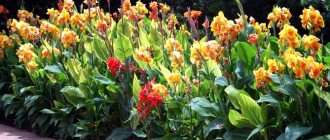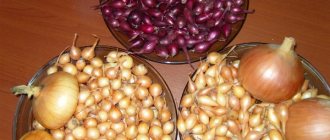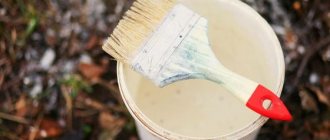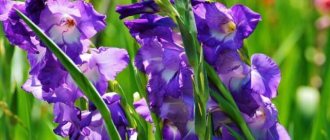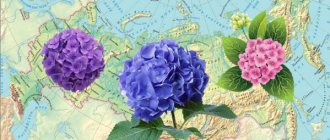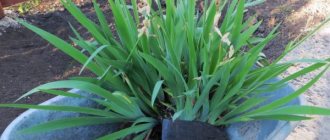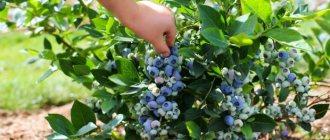Spring changes in nature
Seasons are seasons characterized by weather and temperature.
They change depending on the annual cycle. Plants and animals adapt well to these seasonal changes. In the tropics it is never very cold or very hot; there are only two seasons: one is wet and rainy, the other is dry. Near the equator (the imaginary midline) it is hot and humid throughout the year.
Temperate zones (outside the tropics) have spring, summer, autumn and winter.
Typically, the closer you are to the North or South Pole, the cooler the summers and colder the winters.
In three spring months, nature manages to change beyond recognition. In March, she is just beginning to awaken from hibernation. The spring heat is not enough to make the snow and ice blocks melt, but the air gradually warms up, preparing all living things for a gradual awakening; the first cumulus clouds appear, which still soar very high.
Astronomers consider the beginning of spring to be March 21–22, the moment of the vernal equinox, when day is equal to night, and the end to be June 21–22, the longest days of the year.
For naturalists, spring begins with the arrival of rooks (on average March 19) and the flow of sap from the Norway maple (March 25).
This season is conventionally divided into three periods: early spring - before the snow melts in the fields (until half of April), middle spring - before the bird cherry blossoms (until half of May) and late spring - before the apple and lilac trees bloom (until the beginning of June).
Phenomena in inanimate nature.
In the second half of March, the days become noticeably longer and the nights become shorter; The sun rises higher and higher at noon above the horizon, its rays fall more directly on the earth and warm it up more strongly. The snow becomes loose, begins to melt, and thawed patches form in open areas.
In the second half of March, the first cumulus clouds appear.
They are very beautiful, looking like snow-white, dome-shaped masses with smooth bases. Clouds usually appear in the morning or at noon due to the heating of the air adjacent to the ground; in the evening, when the rising currents weaken, they begin to disappear and melt.
In the first half of April the snow melts off; The streams formed when it melts run down to reservoirs.
Ice drift usually begins in mid-April. Shortly before this, edges appear near the shore - narrow strips of water. Under the influence of water and sun, cracks form in the ice, it splits and moves away. Ice floes, crowded and jostled, rush down the river, hitting the banks and piles of bridges. In the middle of the river, ice floes move faster than near the banks. Along the way they melt. The river is freed from the ice cover, overflows its banks and overflows. The flood begins.
Usually the first thunderstorm occurs in early May.
At this time and later, sudden cold snaps often occur with frosts, from which plants, especially fruit and berry plants, suffer greatly.
Spring awakening of trees. Soon after thawed patches appear, the trees awaken: they begin to flow sap. This phenomenon is revealed if you pierce the bark with a thick needle: a sweet transparent liquid flows out of the rakka; in air it oxidizes and acquires a reddish color.
Extracting sap causes great harm to trees.
Sap flow is a complex physiological process. The roots begin to actively absorb water from the thawing soil, it dissolves the plant’s winter reserves of nutrients and moves in the form of a solution along the trunk and branches to the buds.
Swelling and budding.
Planting trees: how to prepare a place
A year before planting a fruit tree, choose the place where you will plant the tree, and in the spring, start laying a compost heap directly on virgin soil in an area with a diameter of at least a meter and a height of up to 60–70 cm. To cover up the unsightly appearance, plant seedlings at the very base around the heap tall (erect) marigolds. This is the best. But you can also plant seeds of decorative or real sunflowers, or corn seedlings, or sow the seeds of annual dahlias “Jolly Fellows.”
Simply leave the pile, along with the surrounding plantings, to the mercy of fate in the fall. There is no need to apply fertilizers, nor do you need to water. Frosts will break the stems of the decorations, and they will fall onto the soil around the pile. Let them lie there. By next spring, the pile will have settled to the required 25–30 cm, and carefully arrange everything that is lying around it around the pile.
Top 16 primroses among shrubs and trees
Ten days after the start of sap flow, swelling of the buds becomes noticeable, in which rudimentary shoots are located under the protective bud scales.
Photo: Tom Brandt
Wind-pollinated trees and shrubs bloom before they are covered with leaves, or at the very beginning of their development.
Alder and hazel are the first to bloom in the second half of April, and among those pollinated by insects, willow. The buds of the willow are tightly covered with brown scales that look like caps.
Having shed them, the buds look like fluffy balls consisting of hairs that protect the flowers from sudden fluctuations in temperature and rain.
In April, most of the trees are still bare, but the integumentary scales of the swollen buds are already moving apart, and the tailbones of the leaves appear from them. The appearance of leaves. The young leaves of some trees are covered with a sticky fragrant substance, while others have a fluff that protects them from the cold.
The light green color of the trees is tender and transparent at this time.
At the end of April, bird cherry and birch buds bloom; in the first half of May - buds of maple, yellow acacia, apple and pear trees, and then - oak and linden.
In late spring, in the second half of May, the real blossoming of spring begins. Bird cherry blossoms, at the same time - black currant, a little later - wild strawberries and fruit trees, lilac, rowan and most herbaceous plants.
In the last days of May, the fruits of aspen and willow ripen.
The petals of apple and lilac flowers fall off - spring ends, summer begins.
Biology Spring phenomena in plant life
Spring is the time for nature to awaken. According to the calendar, spring begins on March 1st. In nature, spring comes into its own with the beginning of sap flow in the trees, earlier in the south and later in the north on March 1.
The spring movement of sap in trees and shrubs is the first sign of spring. It occurs after the soil thaws and water from the roots begins to flow into all organs of the plant. At this time leaves yet.
Water, accumulating in the cells of plant stems, dissolves the organic substances stored in them. These solutions move to the swollen and blossoming buds . Already in early March, spring sap flow begins in Norway maple, earlier than in other trees, and a little later in birch.
The second sign of spring is the flowering of wind-pollinated trees and shrubs.
Gray alder is the first to bloom in the central European part of the USSR. Its flowers are inconspicuous, but the blooming earrings of staminate flowers are clearly visible 123 . As soon as you touch an alder branch with earrings, the wind picks up a whole cloud of yellow pollen.
Pistillate alder flowers are collected in small grayish-green inflorescences. Next to them, the dry, blackened cones of last year's inflorescences are usually clearly visible.
Almost simultaneously with the alder, the hazel tree, which you met in the fall, blooms.
The staminate flowers of hazel develop in inflorescences - complex catkins, and the reddish stigmas of pistillate flowers protrude from generative (flower) buds.
Early flowering of alder, hazel and other wind-pollinated plants is a good adaptation to life in the forest.
Bare leafless branches do not impede pollination. Pollen picked up by the wind is freely transferred from one plant to another.
The flowering of coltsfoot is also a sign of the coming spring. This perennial herbaceous plant grows in open, sunlit places, on railway embankments, river banks, steep slopes and cliffs.
As soon as the snow melts, its scaly stems appear - flower stalks with bright yellow inflorescences, similar to the inflorescences of dandelions 124 . Large leaves of coltsfoot grow after its fluffy fruits ripen and disperse.
Coltsfoot received its unusual name for the uniqueness of its leaves. Their underside is covered with white, soft, felt-like hairs, and the upper side of the leaves is smooth and cold.
Coltsfoot blooms in early spring, before the leaves bloom, perhaps because its thick, long rhizomes contain reserves of nutrients deposited in the summer of last year.
Feeding on these reserves, flower shoots and fruits are formed.
The third sign of spring is the flowering of perennial herbaceous plants in the deciduous forest. In the middle zone they bloom almost simultaneously with coltsfoot. The first to bloom in the forest are the noble liverwort with azure flowers and the lungwort, then the oak anemone and buttercup 125 , corydalis 119 , spring primrose 126 , spring primrose 127 .
What willow looks like in summer and spring in the photo, seals
It is a deciduous tree or tall shrub with dark bark and a spreading crown.
Winter willow has bare, intertwined branches of a red hue, contrasting against the background of snow and pale colored sky.
Spring awakens the holly willow first among all the plants of the Middle Zone.
Long before the foliage appears, its buds swell, which are oblong-shaped lumps with a fluffy white-yellow surface.
This flowering period is popular among photographers, in whose photographs touching blossoming branches symbolize the long-awaited spring and warmth.
In biology there is no separate name for fluffy buds.
People are accustomed to calling them “chickens” or “seals.”
The early flowering of the holly willow activates the imagination of photographers who create collages where, instead of a real blossoming bud, a kitten sits on a red branch, touchingly clasping it with its paws.
As they fade, the buds turn into earring flowers, which then produce seeds. By summer, the branches are completely free of earrings and are covered with round-shaped leaves.
Summer willow is a tree-like shrub with an oval green crown.
Flowering shrubs in spring
All of them are photophilous and bloom under the forest canopy, when there is no foliage on the trees and shrubs.
In the life of some early flowering herbaceous plants of the forest, their growth under snow is very interesting. Plants such as scilla or snowdrop grow under the snow in winter.
In the spring, many of them emerge from under the snow with green leaves and buds that formed last fall.
Οʜᴎ often bloom before the snow melts 128 . That's why these plants are called snowdrops.
Plants that bloom in early spring always attract attention because they are beautiful and because they are the first plants to bloom after a long winter. Unfortunately, they are often collected in large bouquets. They often destroy entire plants by uprooting them. Plants whose flowering shoots are torn off do not produce fruits or seeds.
This makes it difficult for them to reproduce. Many of the plants have become very rare, for example, liverwort and sleep grass. We must not allow them to disappear completely. We are obliged to take care of the preservation of plants, not to tear them in order to throw them away every other day, not to damage wild plants and to actively protect nature.
Nature protection and rational use of the country's natural resources are legalized by the Constitution of Russia, i.e. are mandatory for all citizens of our country.
Trees and shrubs that are pollinated by insects bloom later, after the leaves have bloomed. If you observe the progress of spring from year to year, you will be able to establish the sequence of spring development of plants.
In the central European part of the USSR, usually 8 days after the coltsfoot flowering, lungwort begins to bloom, and 21 days later - dandelion and willow willow.
The pear blooms on the 29th day, the yellow acacia on the 30th, and the linden on the 75th day after the coltsfoot begins to flower.
Every year, spring phenomena occur in strict order. For example, lungwort always blooms later than coltsfoot, but before dandelion.
Observations of spring phenomena in plant life help to establish the best timing for agricultural work and prepare for it in a timely manner.
For example, it is known: in the regions of the middle zone, the best harvest of cucumbers is obtained by sowing their seeds during the flowering of lilac and yellow acacia, and the best harvest of turnips and beets is obtained by sowing them during the flowering of aspen.
Knowing how many days after the flowering of the coltsfoot lilac blooms, it is easy to set the date for sowing cucumbers and prepare for it.
Peter
The northern capital of Russia is known to everyone for its rich history, palaces and fountains. The climate there, although not as harsh as in the Far East, still rarely indulges residents with truly hot days. But few people know that in St. Petersburg there is a wonderful botanical garden that brings together “domestic” flora and “foreign guests”.
Wind, cold, rain and grayness are ordinary days for St. Petersburg, it is interesting that neither St. Petersburg residents nor guests stop loving him because of this. But it is precisely this eternal autumn mood that makes the arrival of spring a real holiday. Residents of the Northern capital are trying to find time to visit parks, gardens and find out what trees bloom in May in St. Petersburg this spring. Because due to the weather, the flowering time may differ in different years.
Walking along the streets or the St. Petersburg Botanical Garden, you can admire and then tell your friends and acquaintances what trees bloom in May in the city. These are such as:
- sakura;
- Apple tree;
- cherry;
- horse chestnut;
- rose tree;
- bird cherry;
- alder.
Trees versus people
People are waiting for spring, its warm rays of sunshine, which will drive away the dullness, melt the ice and awaken nature. How wonderful it is to go outside and inhale the aroma of apple or cherry! But unfortunately, not all people enjoy spring, and not all trees are so harmless in the wonderful time of flowering.
Every year more and more people suffer from allergies to tree pollen. Agree, it is difficult to maintain a high spring mood when you have a headache, itchy and watery eyes, an itchy nose and constantly want to sneeze.
The population suffers especially severely in May from the flowering of the following trees:
- oak;
- ash;
- maple;
- pine trees;
- hazel;
- poplars.
If representatives of these “dangerous” species are present in large quantities in your region, and you are susceptible to allergies, it is better for you to take a vacation and travel or stock up on the necessary medications.
A coffee tree
A coffee tree
can be grown in an apartment. It not only blooms beautifully, “treats” you to fresh coffee, but also purifies the air in the room. By pinching and trimming the branches, you can achieve the desired shape.
The coffee tree is an effective absorber of negativity in the home. If your family relationships have recently cracked, then a tropical “pet” will help extinguish mutual aggression and smooth out conflicts.
In his presence, different generations begin to better understand and respect each other more, and the spouses regain their former freshness of feelings.
In addition to protecting the family from conflicts, a flowering coffee tree attracts wealth to the home, promotes business development and improvement in the profession, helps to build a career and awakens the talent of a financier.

